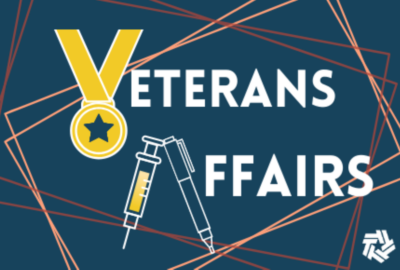

The VA is setting a systemwide goal to have every network using at least half of PACT Act hiring authorities implemented by the end of the year.
The Department of Veterans Affairs is setting targets for all of its health care facilities to implement a majority of new recruitment and retention authorities by the end of the year.
Undersecretary for Health Shereef Elnahal told reporters last Friday that the VA is setting a systemwide goal to have every network using at least half of PACT Act hiring authorities implemented by the end of the year.
The PACT Act, which expands VA health care and benefits for veterans exposed to toxic burn pits during their military service, gives the VA more than 10 new authorities to support hiring and retention.
Those include higher limits for student loan repayments; recruitment, relocation and retention incentives and eliminating statutory limits on awards and bonuses.
Elnahal said Veterans Health Administration facilities are “well on their way” to achieving that year-end goal.
“There are a number of additional types of authorities that allow us to be that much more of an attractive place of work for people considering the VA, but also so that we can retain our amazing people,” Elnahal said. “We need to do both, in order to fully implement the PACT Act.
The American Federation of Government Employees’ National VA Council, in a report released in March, claimed the VA wasn’t yet making full use of its PACT Act recruitment and retention authorities.
Elnahal said the PACT Act’s recruitment and retention authorities vary in terms of how quickly VHA has been able to implement them.
“Nonetheless, all the work required to use them is worth it, and so everybody’s taken very seriously the need to maximize the use of these authorities,” he said. “We asked Congress for them, Congress gave it to us, and it’s on us now to implement and use it to its fullest extent.”
VHA, more broadly, remains ahead of targets to grow its health care workforce.
VHA has made nearly 33,000 new hires in fiscal 2023, which puts the agency ahead of schedule to meet its goal of making 52,000 external hires by the end of FY 2023.
The agency is currently seeing a 3.6% growth in its workforce. That’s VHA’s highest rate of growth in more than 20 years, and remains above its year-end goal of 3% workforce growth.
VHA reduced its time-to-fill rate in February — the first time it managed to do so in fiscal 2023.
However, the agency’s time-to-fill rate ticked back up in March. Elnahal said that trend continued in April with a “slight uptick” in time-to-fill metrics.
Elnahal said VHA is taking steps to streamline the onboarding process for new hires, but is also trying to manage record growth in its workforce.
“We are doing process improvement, while we are also seeing a record number of applications because of our outreach, and essentially shoving more people into a process that’s being improved as we are moving. And so, what that’s doing, is it’s ending up actually increasing the workload significantly,” he said.
To better understand VHA’s hiring needs, Elnahal said the agency is also working on a major “cleanup exercise” of its workforce data.
“That basically means looking at open positions and what we currently log as vacancies and determining whether they actually represent true vacancies,” he said, adding that the agency’s baseline data contains some duplicate entries for adding new positions or filling existing ones.
The Government Accountability Office, at a hearing last week, said a lack of reliable workforce data at VHA is further worsening recruitment challenges.
Elnahal said VHA is taking steps to ensure that applicants for VA nurse positions receive firm salary offers earlier in the hiring process.
“The big thing that I’ve heard is very frustrating is for our nursing staff, who ultimately do not get a salary offer until at a certain point in the onboarding process, and so that makes us less competitive, because when they get offers from other systems, they usually come with a hard-and-fast salary as part of the offer.
House VA Committee members said last week that discrepancies in the agency’s human resources department when coding positions are further contributing to confusion and a lack of transparency during onboarding for new hires, creating a “bait-and-switch” for their exact salaries.
“I think the criticisms we heard reflect true frustrations in the field from our employees and networks. And we’re taking that very seriously, we’re working to address it,” Elnahal said.
Elnahal also said VA’s new renegotiated Electronic Health Record contract with Oracle-Cerner “is a much better one” than the deal that had been in place since 2018.
“There is a higher level of accountability in terms of making rapid improvements to the system as it exists, which is the entire point of doing the reset,” Elnahal said.
The new contract includes stiffer penalties if the vendor doesn’t meet or exceed 28 performance metrics.
Instead of renewing EHR contract for another five years, as the original contract outlined, the VA renegotiated with Oracle-Cerner to extend the contract for five one-year terms.
“What I would say the contract indicates, especially the one-year option periods, is that we expect results fast. And we have mechanisms to hold that company accountable and work together — because we also have to hold ourselves accountable to make it better. But I think we’ve got more tools in our tool belt than we did before to make that happen.”
Elnahal said the new contract also holds Oracle-Cerner for improving the EHR’s configuration. VA facilities have given the system low usability scores in internal surveys.
“Right now, that is what our five sites need more than anything. They need the product to improve in a way that aligns with our processes in key areas. The system needs to become more usable. The number of steps and the time it takes to do things very important for the veteran mission are just taking too long,” Elnahal said.
The VA is putting all future deployments of its new Electronic Health Record on hold, until the five sites already using the Oracle-Cerner EHR show measurable improvements.
Elnahal said the sites currently using the new EHR haven’t yet met returned to pre-deployment productivity levels, and that the VA is providing additional budget resources to those facilities.
“We are making these facilities whole, we have a plan to do so this fiscal year as well. And we will make sure that veterans are not impacted in any way in terms of the services available to them with that strategy of being able to fund these facilities to the extent that they need to.”
Despite persistent challenges with the EHR rollout, Elnahal said the VA needs a modern health record system to meet the needs of its patients, and that the department is committed to continue the Oracle-Cerner rollout.
“I’m confident that we can do it if we put our minds to it. But we have to stay very close to the end-user experience, and take that feedback very seriously in order to accomplish it,” he said.
Copyright © 2025 Federal News Network. All rights reserved. This website is not intended for users located within the European Economic Area.
Jory Heckman is a reporter at Federal News Network covering U.S. Postal Service, IRS, big data and technology issues.
Follow @jheckmanWFED



